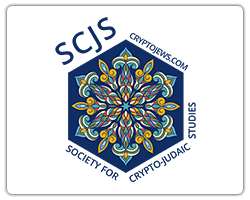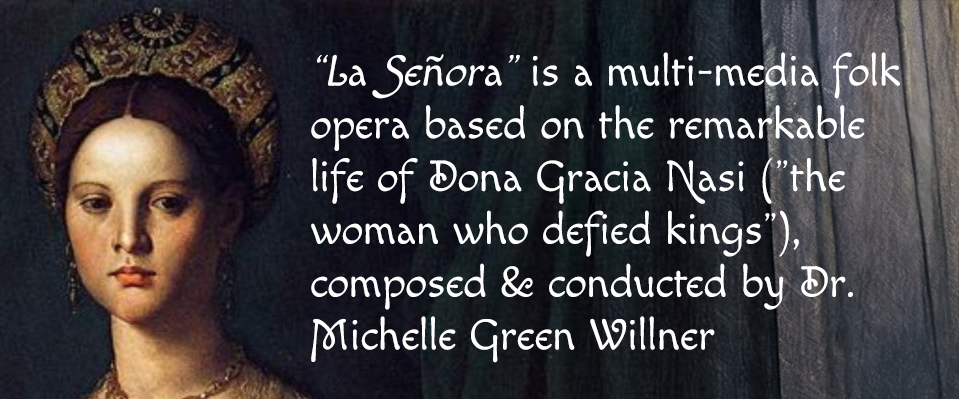For about 100 years before the official start of the Spanish Inquisition bloodshed and tension had been taking place in Spain due to different religious beliefs held by Jews Moors and Catholics In 1391 Catholics staged horrible bloody massacres of Jews and Moors in the cities of Castile Aragon and Seville Spanish Jews (Sephardic Jews) began to convert in massive numbers to Catholicism but still practiced Jewish rituals in secrecy Those Jews who converted to Catholicism were nick named “Conversos” (Converts) and “Marranos” (Pigs) These massacres were the unofficial beginning of a 300 year “forum of justice” spearheaded by the Catholic Church of Spain and led by The Holy Tribunal Office whose purpose was to annihilate or convert all people who did not believe in the Catholic Religion The official start of the Spanish Inquisition was in 1492the same year that Christopher Columbus discovered the “New World” It is known that Conversos played a significant role in financing Columbus’ expedition to “India” and a great number of them actually made the voyage with Columbus As word came in to Spain that Columbus had found a “New World” and boat routes were established the outwardly Jewish and Converso (many of whom were secretly Jewish) community saw an opportunity to leave Spain go to “New Spain” (Mexico and South America today) to escape from the fanatical religious tribunal who persecuted and oppressed their religious beliefs (Lerner 94)
Jews encountered barriers to get into “New Spain” (Mexico) even more so than did Conversos Jews had to filter theie way through as soldiers and sailors with Cortez in 1519 and with forged documents bearing new names (Lerner 94) Conversos who were in judicial office like Luis de Carvajal el Conquistador who had the title of admiral and was privilege to be awarded governorship of a newly created province the New Kingdom of Leon in New Spain also took flight to the New World (Liebman The Enlightened 26)
The new world colonies were settled in accordance with Catholic rules traditions rituals and blessings Therefore when Jews began to settle into the new world bishops and others enforced Inquisitorial rule and executed punishment for the divergence of these rules Clergy started to execute their Episcopal powers since 1523 only four years after the beginnings of Jewish settlers Almost fifty years before the official establishment of the Inquisition in “New Spain” tortures and “Autos de Fe” (Burning of people at the stake) were punishment for not adhering to Catholic laws (Liebman The Enlightened 21) In 1571 the Holy Inquisitional Office had officially taken over the bishops Episcopal powers and had established the Holy Inquisition of New Spain (The Mexican Inquisition) (by 1590 a large Jewish community had already established themselves in Mexico City)
The Jews who fled from Spain to rid themselves of the Inquisitorial demands were doomed to meet the holy office again and endure the Mexican Inquisition in the new land but this branch of the Spanish Inquisition did not only oppress and persecute the Jews and Moors who fled Spain but the Indigenous communities were also subjected to massacres and forced conversion Most victims of the Mexican Inquisition were usually apprehended due to a testimony that accused them of practicing a “pagonistic” faith Jews Moors or Indians who were tried and convicted of practicing “pagan” traditions were punished These sentences consisted of the following or a combination of the following: to renounce one’s paganish faith under oath receive whips or to wear humiliating attire in public exile to remote lands as soldiers serve prison terms and/or death by being burned alive choked or hanged (Liebman Los judios en Mexico y America Central 264) Any women sentenced to prison terms were committed to convents and some were obligated to serve a lifetime in the convents To practice any faith other than the Catholic faith was indeed life threatening One theory suggests many Jews turned to the indigenous population for help and sanctuary
Jews and nonJews lost their lives Many of them found refuge in small Indian villages and lived among the Indian population in order to hide their identity (Lerner 94) As a result JewishIndian communities were established Some of these communities still exist today in Venta Prieta State of Hidalgo; Toluca State of Mexico; Apipilulco State of Guerrero; and Monterey State of Nuevo Leon It is believed that the Mestizo Jewish community of Monterey was settled by Jews fleeing from Pachuca and Tampico and established themselves among the Indians It is believed they changed their names to hide their identity from the Mexican Inquisition and assimilated as best as they could to the tribe (Belled 275) In finding refuge among another people it has been speculated that intermarriages had occurred between female Spanish Jews (Sephardic Jews) and the Indigenous males creating what we know as the Mestizo Jew (Indian Jew) (Learner 94) (Orthodox Jewish law dictates the mother of the child must be Jewish in order that the child be considered Jewish the father does not have to be Jewish) Another theory suggests many female Indians adopted the religion of their Jewish slave masters and had mixed offspring by non Spanish white European men ( Belled 275) As the number of Mestizo Jews increased (intermixed offspring) so did their communities
Venta Prieta is the most known Mestizo Jewish community in Mexico (Learner 90) Sra Trinidad Jiron de Tellez and old woman of Venta Preita gives an account of watching her father scalded to death in boiling oil for Judaizing even though freedom of religious conscience was enacted in 1857 (Liebman American Jewish Archives 160) This particular community believes that it was the home of the ancestors of the Carvajal family who initially settled in the province of “Nuevo Leon” and later in an Indigenous community (Liebman American Jewish Archives 154) It also claims that the Carvajal family intermarried with the Indians because the Carvajales believed that they were the lost Jewish tribe (Liebman American Jewish Archives 161) Mestizo Jewish Communities like Venta Preita who have identified their ancestors have been able to practice the Jewish faith and customs in their purest forms In Venta Preita the traditional male circumcision is adhered to They eat matzo on Passover and adhere to the slaughtering methods dictated by Jewish ritual law (Beller 278) These Jewish Mestizo townships have synagogues observe all of the Jewish holidays and follow the basic Jewish traditions However some Mestizo communities profess themselves as being Catholics follow Catholic traditions but also practice Jewish customs
Many rituals that are performed by Mestizo Jews and Catholic Mestizos in Mexico and across Latin America are a cross between Christianity and Judaism However there are other communities that have never been able or have never bothered to investigate the origin of their “customs” and have remained Catholic but still observe Jewish tradition There are some Indian tribes in Latin America today where women go to church on Friday evenings and light candles before the images of the saints This tradition took its place in Inquisitorial times when Jewish women were afraid to light their Sabbath candles at home so opted to do it in the security of the church These women wave their hands over the candles cover their eyes and say the blessing quietly not knowing the origin of this tradition (Beller 279) There is another Crypto Jewish tradition that Mestizos practice in a region that encompasses southern Arizona and northern Mexico The tradition is that mothers pass on to their daughters on their eleventh birthday the secret of their Jewish heritage (Plevin F 16) The girls are taught special Marano prayers of forgiveness (Plevin F16) There are Peruvian communities of men who profess to be Catholic but wrap themselves in white clothes fast and pray all day once a year in the fall; These men also observe the day of Atonement in the Jewish Religion But after so many years in secrecy with changed customs and holidays to fit their own needs everything amounted to an approximation The rituals developed in these towns and communities became their own unique type of Judaism These customs are distorted and half understood It is a life based on a tradition to be practiced secretly rather than on a knowledge of what it really is to be Jewish Nevertheless the Jewish customs live on and are all a part of the vague memories of the Inquisition they so desperately wanted to hide from in “New Spain” and Latin America as a whole In spite of these traditions and historic evidence some historians do not believe that communities and especially the community of Venta Preita are true descendents of Jews who fled from Spain and settled in the New World
Many historians believe that a few thousand Jews are decedents of the Converso population in Mexico but vehemently deny that any Mestizo Jews exist in Mexico or Latin America for that matter “BetEl and “Casa de Dios’ have been included in a census that record the number of Mestizo Jews and should not have (Liebman American Jewish Archives 156) These two sects are believed to have been recent converts from Christianity to Judaism (Liebman American Jewish Archives 147) In the Structure of Spanish History historian Americo Castro wrote: “The people who really felt the scruple of purity of blood were the Spanish Jew there is a punctilious concern for family purity as a consequence of the persecution in the fifteenth century he became still more acutely aware of his exclusive particularism” (Castro 525) This statement forwardly implies that intermarriages between Indians and Jews was highly unlikely There are also accounts that individuals in the Venta Prieta and Mexico City “Mestizo Jewish” communities have admitted that their parents or forefathers were converted to Judaism only in the very recent past (Liebman The Enlightened 159) Nothing concrete has been established to refute or agree with the possibility of Mestizo Jewry but with all that happened who could say that Mestizo Jewry never existed
I believe Mestizo Jewry exists and has for decades Due to the lack of documented evidence many do not believe for one minute that Mestizo Jewry could exist However the fact of the matter is that you can’t deny the existence of people and their traditions no matter what they are One can’t close his mind and believe that if something is not documented or proven with all five senses that it could not be real Life is not black or white and does not fit into neat categories I have only treded a little on the subject and definitely know there is still so much more to be discovered and I hope one day Mestizo Jewry will be as researched and known as European Jewry
Bibliography
Beller Jacob Jews in Latin America New York: Jonathan David Publishers 1969
Lerner Ira T Mexican Jewry in the LAND OF THE AZTECS Mexico DI B CostaAmici Publishers 1973
Liebman Seymour B Los judios en Mexico y America Central (fe llamas e Inquisicion ) Mexico D F: Siglo Veintiuno Editores Sa 1971
Liebman Seymour B The Enlightened The Writing of Louis de Carvajal El Mozo: University of Miami Press 1967
Liebman Seymour B “The Mestizo Jews of Mexico” American Jewish Archives November 1967; 144
Pelvin Nancy “Latinos Find a Hidden Jewish Heritage” Los Angeles Times May 11 1991; F16





